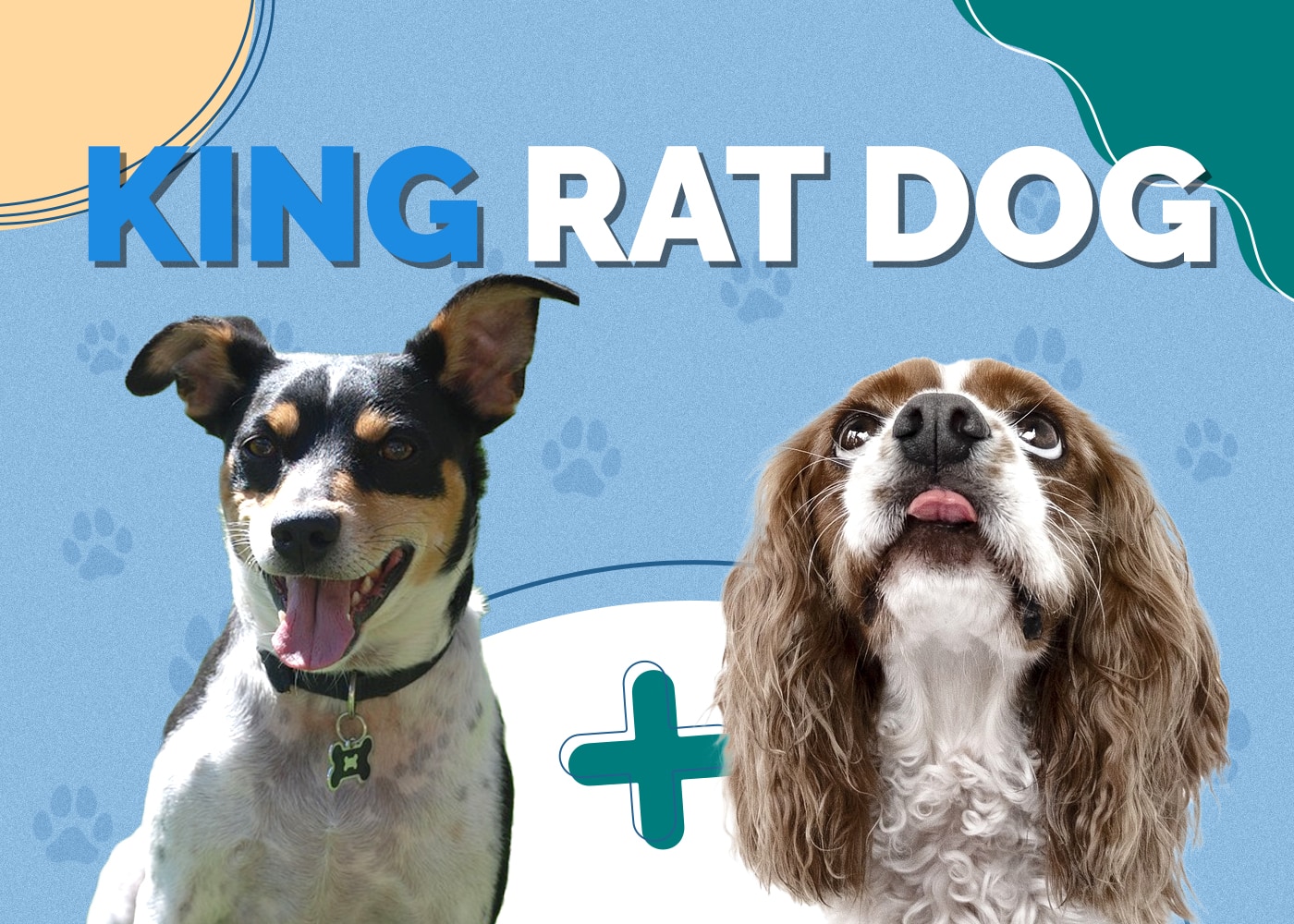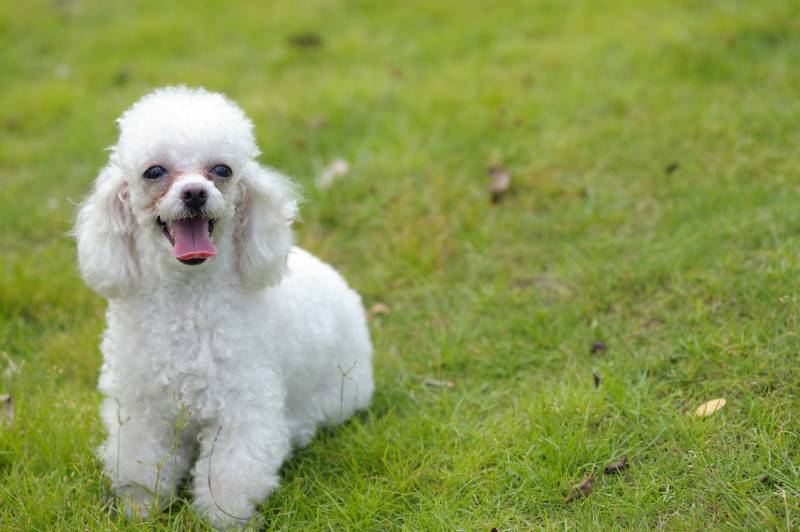Havanese vs. Maltipoo: What’s The Difference (With Pictures)
Updated on
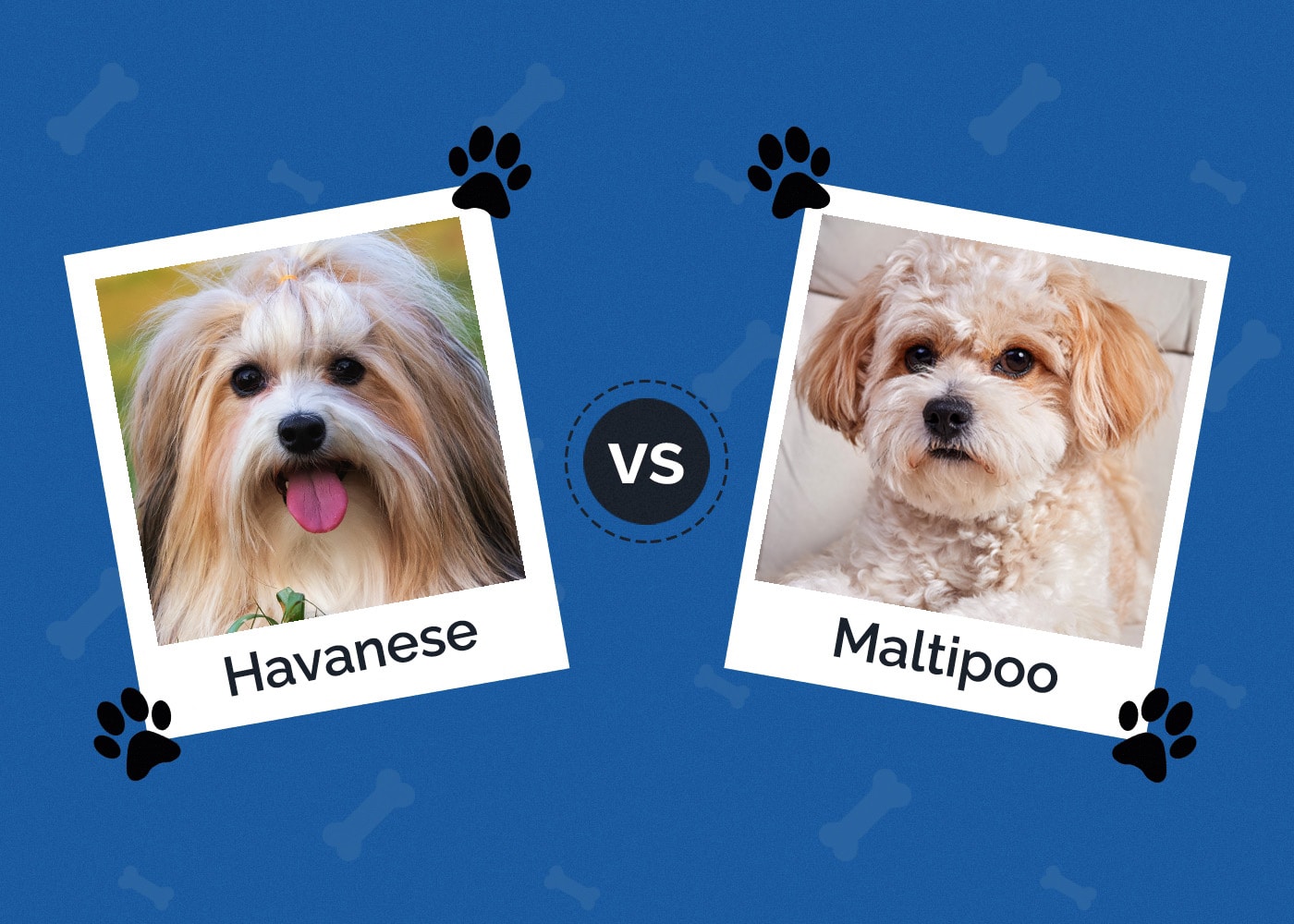
Both the Havanese and the Maltipoo are small, adorable dogs. They are smart, loyal, affectionate, and fun-loving. However, they aren’t the same dog. One is a purebred dog, while the other is a mixed designer breed. One is more sociable, while the other is more suspicious when it comes to strangers. If you want to know more, here’s a thorough comparison of these two breeds:
Visual Differences
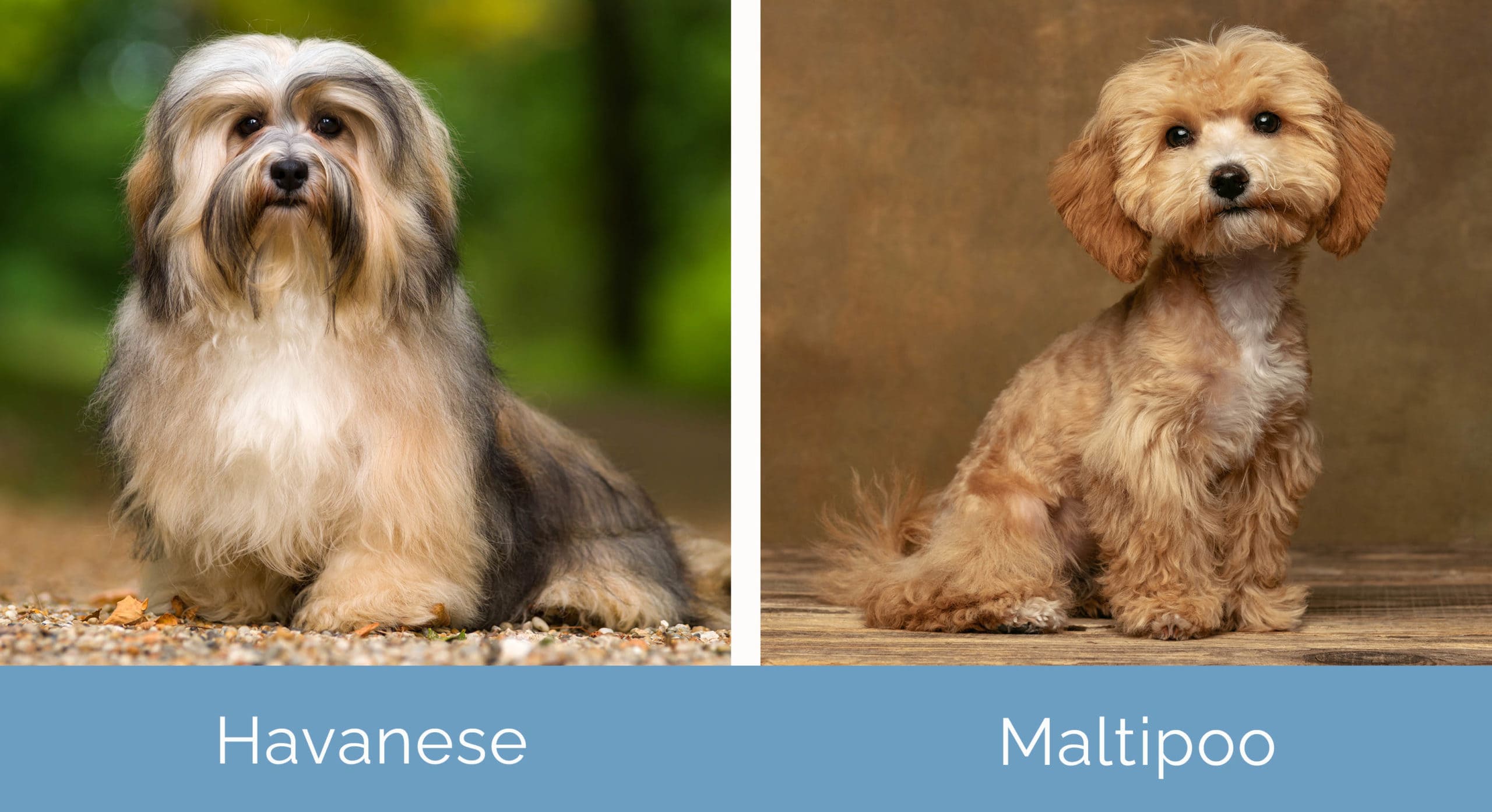
At a Glance
- Average height (adult): 9–12 inches
- Average weight (adult): 7–13 pounds
- Lifespan: 12–14 years
- Exercise: 30+ minutes a day
- Grooming needs: Moderate
- Family-friendly: Yes
- Other pet-friendly: Often
- Trainability: Intelligent, affectionate, trainable, loyal
- Average height (adult): 8–14 inches
- Average weight (adult): 5–20 pounds
- Lifespan: 10–15 years
- Exercise: 40+ minutes a day
- Grooming needs: Moderate
- Family-friendly: Yes
- Other pet-friendly: Often
- Trainability: Gentle, fun-loving, social, affectionate
Havanese Overview
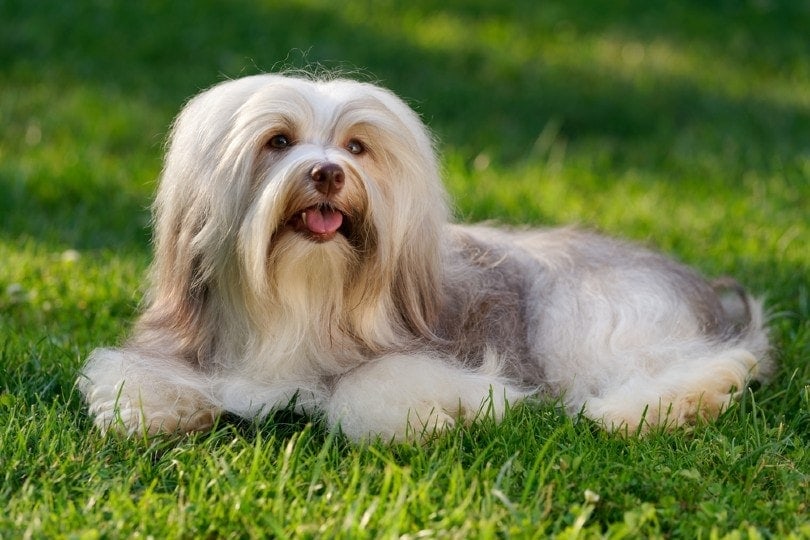
The Havanese is native to Cuba1, the only dog breed that is. These dogs made their way from that country to Europe at some point and then eventually, to the United States with European families who immigrated there. All Havanese in existence today descend from the dogs that ended up in North America. The American Kennel Club recognized them in 1996.
Personality / Character
These little dogs are lively, happy-go-lucky, and sociable animals that love spending time with their human companions. Havanese are active canines with huge hearts and big personalities, despite their small size. This toy breed is typically charming, sweet, and eager to please their family members. They are known for clowning around and tend to get along well with kids and other animals that they live with and meet in social settings.
Exercise
Havanese dogs are extremely active, but their little bodies don’t need more than about 30 minutes of exercise each day to stay happy and healthy. A quick, brisk walk in the morning and an afternoon session of fetch are enough. Other forms of exercise that these dogs enjoy include going to the dog park, playing ball in the backyard, and playing hide-and-seek indoors.
Training
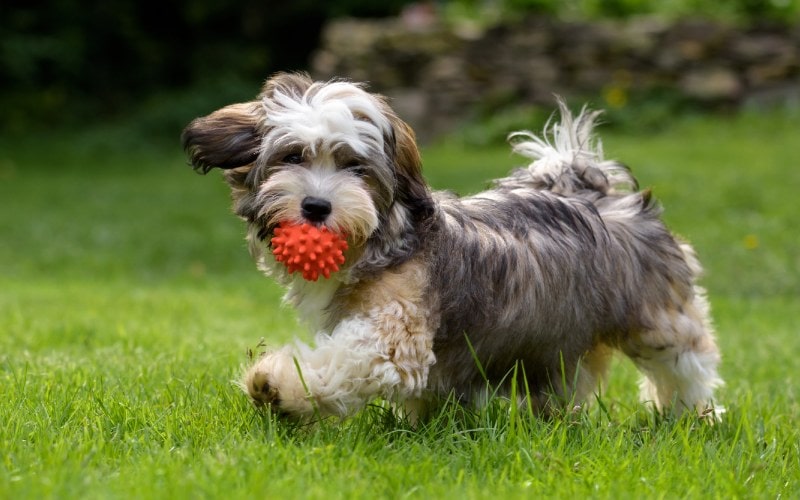
Havanese dogs are smart and quick-witted, which makes them easy to train, at least when it comes to basic obedience skills. These are high-energy dogs, though, so it’s important to keep training sessions calm so they can focus better. They are also sensitive, and positive reinforcement is the only way to go. These dogs tend to respond better to training when affection rather than treats are used as rewards.
- The Havanese was the 142nd dog breed to become recognized by the American Kennel Club.
- This breed was once referred to as both the Havana Silk Dog and the Spanish Silk Poodle.
- These dogs do not do well in cold climates and will thrive in temperate places. They can handle warm weather but should be protected from the sun.
- They are thought to be more sociable than the average dog breed.
- These dogs are prone to developing separation anxiety.
- The Havanese is the national dog of Cuba!
Suitable for:
The Havanese dog is a great family pet that can get along well in a small apartment, a huge house, or anything in between. While they are active, they don’t need much outdoor exercise, which makes them ideal for busy families. They do require moderate grooming, and they can develop separation anxiety, so even busy households should make sure someone is always around.
Maltipoo Overview
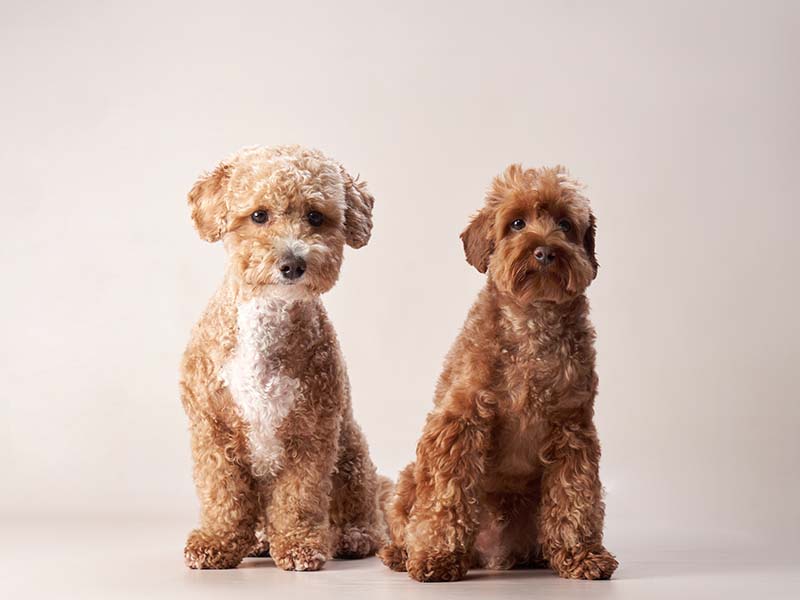
The Maltipoo is a designer dog that was created by breeding the Poodle and the Maltese together. These dogs were developed about 30 years ago in the United States, where they continue to gain popularity. They have been exported to Canada and the U.K., where they have established a significant fan base. These dogs are not yet recognized by the American Kennel Club.
Personality / Character
Maltipoos are considered gentle and affectionate dogs that love to be the center of attention. They want nothing more than to be by their owner’s side, if not right in their lap. Like the Havanese, the typical Maltipoo has a big personality that is full of fun, energy, and interaction. When they are not busy having fun, they want to cuddle up with a human for a lazy nap. When it comes to strange people and noises, though, the average Maltipoo can be suspicious.
Exercise
Maltipoos are about as active as Havanese dogs, but they need a bit more exercise each day for good health and high quality of life. Owners should aim for 40 minutes of vigorous exercise every day of the week in the form of walking, hiking, or playing in the park. When the weather doesn’t permit outdoor exercise, puzzle toys and games like tug-of-war should be a priority.
Training

This mixed dog breed is smart and eager to please, so training tends to be a pleasure. Unlike the Havanese, Maltipoos tend to be focused on the task at hand even when distractions are occurring on the sidelines. Training should begin as early as 8 to 12 weeks old and continue for a lifetime. Obedience training is typically easier than house training, which can take up to 6 months for this dog to master.
- These dogs have three different coat types: soft, silky, and thick.
- Maltipoos are great at serving as therapy dogs due to their calm nature, intense affection, and ability to sense a human’s emotions and needs.
- One of the most common Maltipoo coat colors is apricot.
- Both Miniature and Toy Poodles are used to breed this designer dog.
- They don’t do well in the sun for long periods due to their thick coats.
- Maltipoos shed little, if at all, which is why they are considered hypoallergenic (even though there isn’t really such a thing).
Suitable for:
The Maltipoo is suitable for a variety of different family and household types. They can get along well in an apartment setting, but their penchant for barking at noises happening outside can bother the neighbors. They would do best in a house with a fenced yard so they can get outside to play whenever they want to. They get along extremely well with children and don’t mind sharing their home with other dogs or cats.
Physical Characteristics
The Havanese is usually slightly shorter and lighter than the Maltipoo. Neither stands at more than 14 inches height nor weighs more than 20 pounds. Havanese and Maltipoo dogs come in a variety of different coat colors. Common colors for the Maltipoo are black, red, blue, cream, fawn, chocolate, yellow, and brown.
Common coat colors for the Havanese are fawn, silver, cream, gold, chocolate, sable, and brindle. Havanese dogs tend to have straight or wavy hair that feels like silk to the touch. Maltipoos typically have longer hair than Havanese dogs, but their coats aren’t quite as silky. The Maltipoo’s eyes are round, while the Havanese dogs are more almond-shaped. Both have cute droopy ears and round snouts.
Which Breed Is Right for You?
The only person who can determine whether the Havanese or the Maltipoo is right for you is yourself. It’s a good idea to make a list of the pros and cons for both breeds, and spend time with each one so you can gain a clear idea of which would get along the best in your household. Get your family members involved in the decision-making process to ensure that everyone involved will be happy in the long run.
See also:
- Havapoo vs Maltipoo: Which One Is Right for Me? (With Pictures)
- Havapoo vs Havanese: How Are They Different? (With Pictures)
Featured Image Credit: (L) Sandra Huber, Shutterstock | (R) marketlan, Shutterstock


